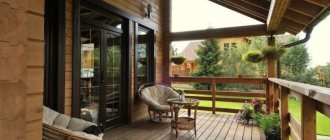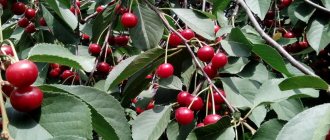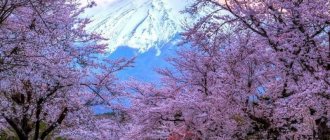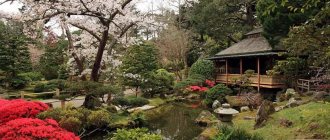general description
The shrub grows approximately 50 cm in height.
On highly branched shoots there are dark green leaves. The leaf shape is oval or lanceolate, slightly wavy. The leaves reach 10 cm in length and 1-2 cm in width. Small white flowers, about 1 cm in diameter, are star-shaped . The flowering period is almost all year round. Inflorescences are arranged singly.
In place of the flowers, small fruits appear, about 3 cm in diameter. At first they are green in color. Then, during the ripening process, they change it to orange and rich red. In appearance, the nightshade fruit resembles a cherry. That is why it got the name Jerusalem Cherry.
On one plant, flowers bloom and fruits ripen at the same time. A large number of seeds ripen during the season. The berries taste bitter and contain toxic substances. If it enters the stomach it causes poisoning.
Types of nightshade with photos and names
Jasmine nightshade (Solanum jasminoides)
This species is native to Brazil. It is represented by evergreen shrubs that have thin, climbing stems without pubescence. Their length can reach up to 400 cm. The tops of the stems are decorated with elongated, ovoid, whole-edged simple leaf plates, the surface of which is without pubescence. In the lower part of the stems, glossy trifoliate foliage most often grows, the width of which is about 30 mm and the length is up to 70 mm.
As a rule, quite lush flowering is observed from early March to mid-October. The bluish flowers reach about 20 mm in diameter, and they are collected in apical paniculate inflorescences. The deep red fruits have a diameter of about 15 mm.
Giant nightshade (Solanum giganteum)
The species is represented by a branching evergreen shrub, the height of which can reach up to 6 meters. The surface of the thick branches is covered with pubescence in the form of whitish hairs, as well as short thorns. On the shoots there are elongated oval dark green leaf plates, the length of which is about 25 cm. On the underside of the foliage there is pubescence, represented by white hairs.
The bush blooms from mid-July to the end of August. Corymbose apical inflorescences are formed on the plant, consisting of hanging dark purple flowers that are relatively small in size. The species is rare in home culture; most often it can be seen in greenhouses.
Seaforth's nightshade (Solanum seaforthianum)
The species is represented by a highly decorative evergreen shrub, the height of which is about 5–6 meters. Its climbing stems are decorated with lanceolate, less often ovate-lanceolate leaf blades. They are odd-pinnate, entire and slightly wavy. The bush blooms from early March until mid-to-late autumn. The axillary panicle inflorescences consist of pendulous pale lilac flowers. The ovoid berries are red-orange in color.
Wendland nightshade (Solanum wendlandii)
In nature, the species is found in the mountainous regions of Central America at an altitude of 2000 to 3000 meters. It is represented by evergreen branching shrubs, the height of which is about 4 meters. The surface of the climbing branches is covered with short thorns. In the upper part of the stems, the foliage is oblong-elliptical, and its length is about 10 centimeters. At the bottom of the branches there is three-lobed foliage of a dark green hue, the width of which is about 10 centimeters and the length is up to 25 centimeters.
Blooms in the summer months. Apical corymbose panicles form on the bush. Densely growing purple flowers reach 50 to 60 mm in diameter. The color of the fruit is deep purple.
Nightshade (Solanum crispum)
This decorative flowering species is characterized by fast growth and climbing stems. Blue-purple flowers are collected in apical corymbs.
Nightshade (Solanum pseudocapsicum)
The species is represented by a non-deciduous subshrub, the height of which is about 50 cm. The branching stems are decorated with dark green elongated lanceolate leaf plates.
With optimal care, the bush blooms and bears fruit all year round. Single small flowers are painted white. Externally, the fruits are similar to cherries. Their color depends on the degree of ripening and can vary from green to deep red. The berries are very bitter and should not be eaten.
Pepper nightshade (Solanum capsicastrum)
The species is also popularly called “Jerusalem cherry.” An evergreen low-growing subshrub can reach a little more than half a meter in height. The elongated, lanceolate, bluish-green leaf blades have a wavy edge and vary in size.
The bush blooms from June to August. Single small flowers are painted white. The red fruits reach about 20 mm in diameter and contain poison.
Nightshade Pepper (Cuban Cherry) Unpretentious Plants for Beginners
Photo
You can visually familiarize yourself with false pepper nightshade from the photo:
Flower transplant
Nightshade should be replanted in the spring; this is done along with pruning. Usually manipulations are carried out in February. A substrate with a high degree of breathability is used. A moisture-retaining soil with a neutral pH and good aeration is optimal.
Proper soil will promote healthy growth of your indoor shrub.
At the same time, the stems are immediately cut by almost half. First, the large stem is shortened, and then the ends of the shoots are pinched when they begin to grow. This method will ensure the formation of the correct and beautiful shape of the exotic tree.
Home care
False pepper nightshade does not require special care; it is quite unpretentious.
Thanks to its appearance, it is loved by gardeners. It attracts attention with its bright foliage, delicate flowers and bright berries.
Care after purchase
Jerusalem cherry, after acquisition, you need to provide comfortable conditions. Otherwise, if it finds itself in a stressful situation, it may shed its leaves.
The adaptation site should be well lit, but without direct sunlight. The plant is also provided with abundant watering.
It may take 7-10 days to adapt to a new place. After which you can transplant it into a new pot. Usually the soil in store pots is peaty and not suitable for permanent growth, so it needs to be replaced.
Trimming
Every year at the beginning of spring it is necessary to shorten the shoots by 1/3 of the length. This procedure is performed after the fruits have ripened. In autumn, the tips of the shoots are pinched - this promotes the formation of side shoots.
Watering
Nightshade requires plenty of watering during the spring and summer months. In autumn and winter, watering is moderate.
Important! The soil in a pot of false pepper nightshade should always remain moist.
During the wintering period, watering should be done no more than once a week. The earth mixture should not dry out.
The coral bush loves high air humidity. Therefore, throughout the year it must be sprayed with warm, settled water.
To increase air humidity, you can place the pot with the plant on a tray with wet pebbles. With low humidity, flowering and fruiting stop .
Landing
For planting, ready-made soil can be purchased in advance or made independently.
To do this, mix in a 2:1:1:1 ratio:
- turf soil,
- leaf soil,
- peat,
- sand.
After planting, the plant is placed in a warm room and provided with regular and abundant watering.
Transfer
Every spring, after pruning the shoots, they are transplanted into new nutrient soil. Since during the process of flowering and fruit ripening the plant draws all useful substances from the soil, after a period of dormancy it needs to be fed.
A layer of drainage, at least 3 cm, must onto the bottom of the pot
10-14 days after watering, fertilizer is applied to the soil, which is used to fertilize tomatoes. Follow the dosage according to the attached instructions. During the entire flowering period, fertilizing is applied to the soil every 15-20 days.
About indoor nightshade
Mostly peppered nightshade and false pepper nightshade are grown. Popularly, this plant got its own name. You can hear - Jerusalem Star, Coral Bush. Like pepper, it comes from Brazil, but grows naturally in almost all tropical zones, including Crimea.
Despite the similarity of the mentioned nightshade species, they are easily distinguished. To distinguish peppery Nightshade from False Pepper Nightshade, you need to look at the shoots of the plant. In false pepper nightshade they have a light gray edge, while in pepper nightshade the shoots are smooth, without edge. They also differ in the size of the leaves and fruits. In pepper nightshade they are smaller. But the most important difference between these species is not external, but in the fact that pepper nightshade can be eaten and it even belongs to medicinal plants. True, the taste of the fruits of this plant is somewhat specific, and having tried them once, you are unlikely to want to repeat them. False pepper nightshade is not only inedible, but also poisonous.
Note! If there is even the slightest doubt about the correctness of the species identification, do not risk tasting it. Keep nightshade away from children. Bright, beautiful fruits will easily provoke a desire to taste them. It won't give them any pleasure. Although there will not be very serious consequences, an upset stomach will be guaranteed.
The decorativeness of nightshade is beyond praise. And given that its peak occurs mainly in winter, on the eve of the New Year, it becomes no less popular than luxurious poinsettia or cyclamen.
Growing from seeds
To germinate seeds, leaf soil is used, which is poured in a 10 cm layer into a seedling box.
Seeds are laid out on the surface at a distance of 2-3 cm. A layer of sand about 1-1.5 cm is sprinkled on top.
The seedling box is covered with film and placed in warm room with a temperature of 21-23 degrees.
Periodically, the film needs to be lifted and the surface sprayed with a spray bottle. After 10-14 days, shoots will appear. After 2-4 leaves appear, they are planted into separate pots.
Reproduction
After pruning the plant in spring, you can select the strongest cuttings and root them. To do this, they are placed in a container of water. You can immediately plant the cuttings in a separate pot with prepared soil and moisten the soil well.
Note! The top of the cutting is covered with a glass jar. It will create a microclimate inside, and the rooting process will go faster.
Temperature
In the spring and summer months the temperature should be 19-25 degrees. In winter, you need to reduce the room temperature to 12-15 degrees.
In summer, it is advisable to take flower pots to the balcony or garden. You need to make sure that it is not exposed to direct sunlight. Nightshade is also protected from drafts.
Lighting
Regardless of the time of year, nightshade needs good lighting. The optimal location of the flower is windows that face east and west. When placing a pot on a south window, one should not forget about shading.
Reproduction methods
Cuttings
Stem cuttings are used to propagate indoor nightshade. After the plant is pruned in the spring, the remaining pieces are not thrown away. Select the most powerful and completely healthy sections and plant them for rooting. To do this, you can use a mixture of peat and sand, or vermiculite, or just sand.
When the cutting takes root, it is planted in a permanent individual pot, which is filled with an earth mixture consisting of sand, turf and humus soil (1: 1: 2). Don't forget to make a drainage layer at the bottom of the container. Pinch the tops of the stems of the transplanted bush to enhance its branching. During the summer period, you can make several light prunings, which will also help stimulate the plant to tiller.
Pruning and propagation of nightshade. Results after six months
Growing from seeds
To propagate nightshade, the seed method is also used. Start by filling a small container with sifted leaf soil. Distribute the seed material evenly over the surface of the substrate. Cover the seeds with a thin layer of sand. The crops are slightly moistened with a spray bottle, covered with glass or film on top and transferred to a place where it is always warm (about 22 degrees).
The first seedlings should appear after about 15 days. As the seedlings grow and develop, they will need 2 picks. Then the bushes are transplanted into a soil mixture of turf and humus soil, as well as sand (1:2:1). Next, they are cared for in the same way as rooted cuttings (see above).
Benefits and harms
Attention! Under no circumstances should you try the berries.
The berries of false pepper nightshade contain the alkaloid solanine , which, if ingested, causes poisoning .
Even despite the content of toxic substances, nightshade juice is used in folk medicine in South Africa and India. It is used to treat boils, drowsiness and relieve cutting pain.
Types of Solanum
This is an indoor perennial plant belonging to the nightshade family. It is an evergreen deciduous shrub slightly more than half a meter high. The homeland of nightshade is the South American shores. The exotic look of the shrub is given by its elongated glossy leaves and branches constantly showered with berries and flowers. The bright orange and red fruits resemble cherries, hence the popular name.
Bright and attractive berries, beckoning from afar, are the plant’s natural protection. They are poisonous, so it’s not worth trying them on the tooth even for the sake of curiosity.
And this fact must be taken into account if there are small children or pets among the household.
There are more than 1,500 species of nightshade in nature. In our area, only a few can be found at home.
Nightshade pepper
The view is more compact in size. It is distinguished by smaller fruits and delicate shoots. This shrub is from southern Brazilian and Uruguayan forests. It is popularly known as the “angina tree” because a healing infusion is made from its shoots.
False pepper nightshade
A shrub up to 1.2 meters high with oval leaves and small white flowers. It bears fruit with round red or yellow berries. At home, a low-growing form of nightshade takes root. This species originates from the island of Madeira.
Both varieties of solanum are adapted to home conditions, but for some of them they are very demanding.
For garden
Bittersweet nightshade (Solanum dulcamara) is common in Europe and North Africa; in central Russia it grows in meadows and floodplains. It is a deciduous climbing subshrub up to 2.5-3 m tall, with woody stems at the base, bare or drooping with sparse appressed hairs. The leaves are predominantly tripartite, 4-10 cm long and 2.5-6 cm wide, rarely pubescent or glabrous, on petioles 1-3 cm long. The flowers are purple, less often pink or white, similar to potato flowers, five-membered, 12-18 mm in diameter, with narrow lobes bent back, less than 1 cm long, at the base with green white-edged spots, collected in drooping panicles of 6-25 or more flowers. The fruits are bright red, less often greenish-yellow, ovoid, with a pointed tip, berries up to 1.5 cm long, with numerous seeds, poisonous. Blooms in June-July, bears fruit in July-October. There is a variegated form, Variegata, which has leaves with an uneven white border.
Until recently, it was not widespread in culture - few people found beauty in “potato” leaves and flowers. The French Marquise de Pompadour, who loved to pin a boutonniere of potato flowers to her dress and contributed greatly to how the fate of this culture ultimately developed, would definitely not agree with this opinion.
A moisture-loving plant, bittersweet nightshade has become more widely used in culture with the spread of fashion for decorative ponds. In nature, most often a small plant on fertile garden soil reaches a height of 1.5 m or more. It grows well on the slopes of banks and near fences, twisting leaf petioles around the support. It blooms for a long time, and from July to autumn you can see both flowers and fruits on the plant at the same time. It looks most impressive when covered with many ripe, shiny red berries. During the winter, the aboveground part dies off, leaving a woody rhizome in the ground, from which new stems grow in the spring.
Propagation is very simple - by shoots, layering. If you need a lot of planting material, sow seeds washed from the pulp. The seeds are dormant and require stratification. Natural stratification is possible during winter sowing, or artificial stratification at +1+5 o C for a month - before sowing in March. Temperature fluctuations ranging from +10 to +25+30 o C have a positive effect on germination.
Nightshade care (video)
nightshade genus (Solanum) is the largest in the nightshade family (Solanaceae) and one of the largest among the angiosperms, numbering about 1,700 plant species. It is known, first of all, for such important agricultural crops as potatoes (Solanum tuberosum), tomato (Solanum lycopersicum), eggplant, and according to the botanical classification - dark-fruited nightshade (Solanum melongena).
Recently, hobbyists have begun to grow such exotic vegetable crops as soft-prickly nightshade, or pepino, melon pear (Solanum muricatum), naranjilla (Solanum guitoense), cocoon, or nightshade (Solanum sisymbriifolium), large-fruited nightshade, or African eggplant ( Solanum macrocarpon) is a close relative of the eggplant, having small white round fruits and edible leaves, the tamarillo, or tomato tree (Solanum betaceum), until recently belonging to the genus Cyphomandra, with fruits resembling long-fruited tomatoes.
And among residents of southern Russia, the word nightshade, of course, is associated with an annual weed - black nightshade (Solanum nigrum). Its grass and unripe fruits are poisonous, but ripe ones are sweet, edible not only raw, but also suitable for filling pies and dumplings, for jam and jelly.
Much more productive is the hybrid large-fruited nightshade Burbank (Solanum x burbankii), which was obtained by the American breeder Luther Burbank in 1905 by crossing the African Guinea nightshade (Solanum quineense) with the European species Solanum villosum. It is called sunberry (Sunny berry) and is grown as an annual berry crop. Its cherry-sized berries look and taste a little like blueberries, and are used like black nightshade - for jams, preserves, and winemaking (see Cold Apple Jelly with Sunberry, Carrot Caviar with Sunberry, Sunberry Salad with Avocado and Spinach , Sunberry Muffins, Sunberry Ginger Jam, Sunberry Jam, Sunberry Liqueur, Apple and Sunberry Wine)
There are not so many decorative species among nightshades. And in the open ground of the middle zone, only one species can overwinter, our local species - bittersweet nightshade. Most representatives of the genus come from the tropics and subtropics of South and Central America, some from South Asia (India, Sri Lanka), although some species are widely distributed throughout the planet.
Diseases and pests
Nightshade does not bear fruit. Nightshade may require additional artificial pollination. To do this, you can transfer pollen from flower to flower using a soft brush.
Nightshade leaves and fruits fall off. The main reason for this behavior of the plant is the increased temperature and humidity in the room.
Pests of nightshade. Nightshade can be infested with whiteflies, aphids or spider mites. The risk of damage increases if the plant is kept in a room with too dry air.











